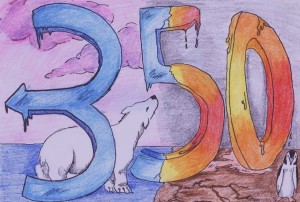UN: Greenhouse Gases Reach Record Levels

According to the United Nation’s World Meteorological Organization (WMO), in a report released on November 23, 2009, the levels of all greenhouse gases continue to increase exponentially. In 2008, the global concentrations of carbon dioxide (CO2), methane (CH4), and nitrous oxide, which are the main long-lived greenhouse gases in the atmosphere, reached the highest levels recorded since the pre-industrial era. Since 1990, the overall increase in radiative forcing caused by greenhouse gases has been 26 percent, and the increase was 1.3 percent from 2007 to 2008.
Greenhouse gases trap radiation within the earth’s atmosphere causing it to warm. Human activities such as fossil fuel burning and industrialized agriculture are major emitters of greenhouse gases, which scientists recognize as being the drivers of global warming and climate change.
The four most prevalent long lived greenhouse gases that are directly influenced by human activities are carbon dioxide (CO2), methane (CH4), nitrous oxide (N2O) and halocarbons. The WMO coordinates the observations of these gases in the atmosphere in stations located in more than 50 countries.
The globally averaged mixing ratio of CO2 in 2008 was 385.2 ppm (number of molecules of the gas per million molecules of dry air). It was an increase of 2.0 ppm from 2007, continuing an exponential increase. Carbon dioxide has contributed 63.5 percent to the increase in overall radiative forcing since 1750. According to the WMO, the atmospheric abundance of CO2 was nearly constant at 280 ppm before the year 1750. The main causes of the dramatic increase in CO2 since the industrial revolution have been the combustion of fossil fuels (oil and charcoal), deforestation and land use change. Organizations such as Greenpeace and 350.org recommend that CO2 emissions should be kept in a range of 350 ppm or below to avoid catastrophic consequences of global warming and climate change.
The globally averaged mixing ratio of CH4 in 2008 was 1797 ppb (number of molecules of the gas per billion molecules of dry air). By comparison, before the industrial revolution, atmospheric CH4 was about 700 ppb. Methane has contributed 18.2 percent to the increase in overall global radiative forcing since the beginning of the industrial revolution. Sixty percent of CH4 emissions come from anthropogenic sources such as ruminants’ flatulence, rice agriculture, landfills and biomass burning. By cutting down our consumption of meat, we would not only greatly improve our cardiovascular health but also decrease the level of CH4 emissions by reducing the demand for beef.
These latest figures from the WMO confirm the continued trend of a rising atmospheric burden represented by greenhouse gases. It is not a coincidence that the WMO made the data available a few days before the UN-sponsored climate conference in Copenhagen. Unfortunately, the two biggest emitters, China and the United States, are dragging their feet about committing to a 20 to 45 percent CO2 emission reduction by 2020. In the US, a health care bill has monopolized everyone’s attention and made Americans forget that global warming and climate change will be highly hazardous to their health.
Related Articles













6 Responses to UN: Greenhouse Gases Reach Record Levels
You must be logged in to post a comment Login